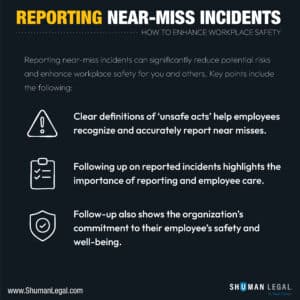Key Takeaways
- Employers must proactively recognize and address workplace hazards to minimize risks and foster a culture of safety.
- Regular breaks and proper ergonomics are essential to enhance employee well-being and productivity, helping prevent injuries.
- Comprehensive safety training and adherence to safety protocols are crucial for maintaining compliance and a safe working environment.
Recognize and Address Workplace Hazards
The cornerstone of a safe workplace is the ability to recognize and address hazards before they lead to injuries, illnesses, or even deaths. This proactive approach is not just a best practice; it is a fundamental principle of occupational safety and health programs. Employers in Illinois are required to provide proper training and resources to ensure that employees understand and follow safety protocols effectively.
Finding and fixing hazards before they cause injury is recognized as a more effective approach to safety management. This preventive strategy not only minimizes the risk of workplace injuries but also fosters a culture of vigilance and responsibility. Identifying and promptly mitigating potential hazards helps create a safer workplace for all employees.
Maintain Proper Ergonomics
Ergonomics is the science of adapting the workplace to fit the needs of workers, aiming to reduce the risk of musculoskeletal disorders. In an office setting, this might involve adjusting the height of a chair or the position of a computer monitor to ensure a comfortable and safe working posture.
Common risk factors for musculoskeletal disorders include repetitive motions, awkward postures, and heavy lifting. Addressing these factors can significantly reduce the likelihood of workplace injuries and improve employee well-being.
Ergonomic training helps workers find proper techniques intended to avoid injuries and maintain a safe workplace.
Your search for help ends here. Let’s get started, for FREE.
Schedule Regular Breaks
Taking regular breaks is essential for maintaining employee focus and reducing fatigue-related accidents. Supervisors who model taking breaks can positively influence their team, promoting a culture where breaks are seen as important rather than unproductive.
Encouraging a break culture can significantly enhance employee productivity and overall workplace satisfaction. Employers should actively encourage short, frequent breaks to optimize workforce performance and well-being, along with other benefits. This practice helps achieve the goals of a safe and efficient workplace.
Adhere to Safety Protocols
Following established safety protocols is crucial for maintaining a safe workplace. The Illinois Department of Labor (IDOL) oversees the enforcement of safety and health standards in workplaces, ensuring they are compliant with established regulations and laws. This includes creating safe work environments through established safety standards and regulations.
Following established safety procedures without taking shortcuts ensures a safe workplace. A proactive approach to occupational safety involves consistently following safety protocols and encouraging open communication about unsafe conditions and rules, emphasizing shared responsibility.
State and local government employees can report unsafe working conditions through specific complaint forms provided by IL OSHA to contact the appropriate authorities and place notice on the issues.
Stay Updated on Safety Regulations
Keeping up with safety regulations is essential for maintaining a safe workplace. IL OSHA mandates that state and local government workplaces adhere to safety standards that are at least as stringent as those set by federal OSHA. Compliance with safety protocols in Illinois is monitored through inspections and reports by both federal and state OSHA authorities.
Regular safety training is essential to maintain compliance with both state and federal OSHA standards. Employers should provide updates and training sessions regularly to ensure adherence to evolving safety regulations. This proactive approach ensures that all employees are informed and prepared to maintain a safe working environment.
Ensure Emergency Exits Are Accessible
Emergency exits must:
- Be permanent and constructed with fire-resistant materials to ensure safety during evacuations.
- Have at least two exit routes in workplaces to facilitate safe evacuation.
- Be positioned as far apart as possible.
Exit door and route requirements include:
- Exit doors must be easily opened from the inside without special tools or knowledge, allowing quick access in emergencies.
- The capacity of exit routes must accommodate the maximum number of occupants, ensuring sufficient size for evacuations.
- Exit routes must maintain a minimum height and width, with specific dimensions to prevent obstruction during emergencies.
Promote the Use of Personal Protective Equipment (PPE)
Personal Protective Equipment (PPE) is essential for reducing exposure to serious workplace risks, including chemical, physical, and electrical hazards. Employers must ensure that PPE fits correctly to provide optimal protection; ill-fitting equipment can compromise safety.
Employers should enforce the use of appropriate PPE to protect employees from potential hazards. By providing and promoting the use of PPE, employers can significantly enhance workplace safety and health.
Foster a Culture of Reporting Unsafe Conditions
Encouraging the reporting of unsafe conditions is critical for maintaining a safe workplace. Employees in Illinois can report unsafe working conditions through an online complaint system established by IL OSHA. This system allows for easy and anonymous reporting, which can help alleviate employee fears about retaliation for reporting unsafe conditions.
Utilize Comprehensive Safety Training Programs
Comprehensive safety training programs are vital for preparing employees to handle workplace hazards effectively. Employees must be trained on specific workplace hazards to be effectively prepared for emergency situations. Comprehensive OSHA training programs include specialized courses addressing various workplace hazards.
Employers must train employees on the proper use and limitations of personal protective equipment (PPE) for each person. Modern cloud-based systems can enhance the delivery of tailored safety training courses. On-site safety consultations can help businesses develop effective training programs tailored to their specific needs.
Suspect Your Workplace Is Not Completely Safe?
Leverage Resources for Occupational Safety
Employers should use OSHA resources, including guidelines, consultations, and training programs, to maintain a safe workplace. OSHA’s On-Site Consultation Program provides free assistance to small and medium-sized businesses to identify hazards without resulting in penalties.
The Illinois Department of Labor offers various resources, including training and consultations, to help an employer improve workplace safety and employment practices. State and local government employers must comply with OSHA standards and report workplace injuries and illnesses. By leveraging these resources, employers can enhance their occupational safety efforts and ensure a safer workplace.
Understand Whistleblower Protections
Whistleblower protections ensure that employees can report unsafe working conditions without fear of retaliation, as retaliation is prohibited. State and local government employees can report unsafe working conditions by providing information. They can do this by completing a form or submitting a complaint online.
Effective communication of whistleblower protections ensures employees feel safe to report concerns. Employees have the right to report retaliation for exercising their safety rights using the IL OSHA Whistleblower Complaint form.
Frequently Asked Questions
Why is it important to recognize and address workplace hazards?
It is essential to recognize and address workplace hazards to prevent injuries and illnesses, ensuring a safer work environment for all employees. Taking proactive measures can significantly reduce risks and promote overall well-being at work.
How can maintaining proper ergonomics benefit employees?
Maintaining proper ergonomics benefits employees by reducing the risk of musculoskeletal disorders and enhancing overall well-being. This holistic approach not only promotes health but also boosts productivity and job satisfaction.
What are the benefits of scheduling regular breaks?
Scheduling regular breaks significantly enhances employee focus and productivity while reducing fatigue-related accidents, leading to greater overall workplace satisfaction.
Why is it essential to adhere to safety protocols?
It is essential to adhere to safety protocols as they ensure compliance with regulations, prevent accidents, and promote a culture of safety and health in the workplace. This commitment significantly reduces risks for everyone involved.
What resources are available for improving workplace safety?
To improve workplace safety, utilize OSHA guidelines, training programs, and consultations, along with support from local labor departments. These resources are essential for fostering a safer work environment.
Related Articles
Permanent Total Disability (PTD): What You Need To Know About Workers’ Compensation















